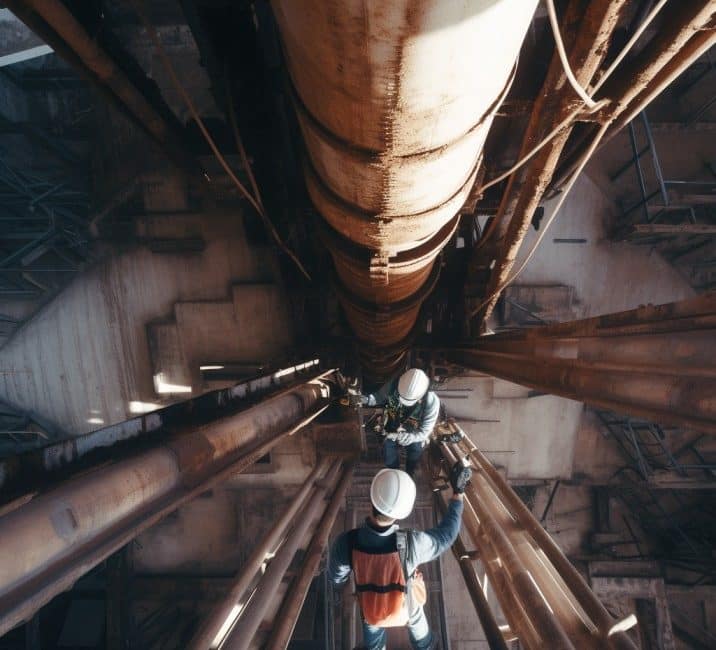Industrial inspections play a crucial role in ensuring the safety, functionality, and compliance of various infrastructure and facilities. Traditionally, these inspections have been conducted manually, often involving significant time, resources, and risk to personnel. However, with the advent of drone technology, inspections have become more efficient, cost-effective, and safe. In this article, we will explore how drone inspection services are revolutionizing industrial inspections and the benefits they offer.
1. Improved Efficiency and Speed
One of the key advantages of using drones for industrial inspections is the significant improvement in efficiency and speed. Drones can quickly navigate complex structures, such as buildings, towers, or pipelines, capturing high-resolution images or videos in a fraction of the time it would take for manual inspection. This allows for faster data collection and analysis, enabling prompt decision-making and response.
2. Enhanced Safety
Safety is a top priority in industrial inspections, especially when dealing with hazardous environments or hard-to-reach areas. By utilizing drones, companies can minimize the risk to personnel by eliminating the need for them to physically access dangerous locations. Drones can access confined spaces, heights, or areas with toxic gases or chemicals, reducing the exposure and potential harm to human inspectors.
3. Cost-Effectiveness
Drone inspection services offer significant cost savings compared to traditional inspection methods. Manual inspections require scaffolding, cranes, or other specialized equipment, along with labor costs. Drones eliminate the need for such equipment and can be operated by a trained pilot, reducing expenses associated with personnel and equipment rental. Additionally, drones can cover large areas in a single flight, optimizing resources and reducing overall inspection costs.
4. High-Quality Data Collection
Drones equipped with high-resolution cameras and sensors can capture detailed images, videos, and thermal data during inspections. This data provides a comprehensive view of the infrastructure’s condition, allowing for accurate assessments and identification of potential issues. The ability to capture precise data enables better planning, maintenance, and decision-making, improving the overall effectiveness of inspections.
5. Remote Monitoring and Analysis
With drone inspection services, monitoring and analysis can be conducted remotely. Live video feeds and real-time data transmission enable inspectors or engineers to assess the infrastructure’s condition from a remote location. This eliminates the need for on-site presence, saving time and resources. Furthermore, the collected data can be stored and analyzed for future reference or comparison, facilitating proactive maintenance and monitoring.
6. Flexibility and Adaptability
Drones offer flexibility and adaptability in conducting inspections across various industries and applications. They can navigate challenging terrains, access hard-to-reach places, and adapt to different environmental conditions. Whether it’s inspecting wind turbines, power lines, oil and gas infrastructure, or construction sites, drones can be equipped with specialized sensors or cameras to meet specific inspection requirements.
7. Documentation and Reporting
Drone inspection services provide comprehensive documentation and reporting capabilities. The captured data can be analyzed using advanced software tools to generate detailed reports, including annotated images, thermal maps, or 3D models. These reports provide valuable insights into the infrastructure’s condition, highlighting areas of concern or potential maintenance needs. This documentation is essential for compliance purposes, audits, or insurance claims.
8. Environmental Impact
Using drones for industrial inspections also contributes to reducing the environmental impact compared to traditional methods. By eliminating the need for heavy machinery, drones reduce carbon emissions and minimize disturbances to surrounding areas. Additionally, the efficient data collection and analysis facilitated by drones enable proactive maintenance, reducing the risk of failures or damage that could have a more significant environmental impact.
In conclusion, drone inspection services are revolutionizing industrial inspections by enhancing efficiency, safety, and cost-effectiveness. With their ability to access difficult areas, collect high-quality data, and provide remote monitoring and analysis, drones offer numerous benefits across various industries. By leveraging drone technology, companies can improve their inspection processes, make informed decisions, and ensure the integrity and compliance of their infrastructure.





